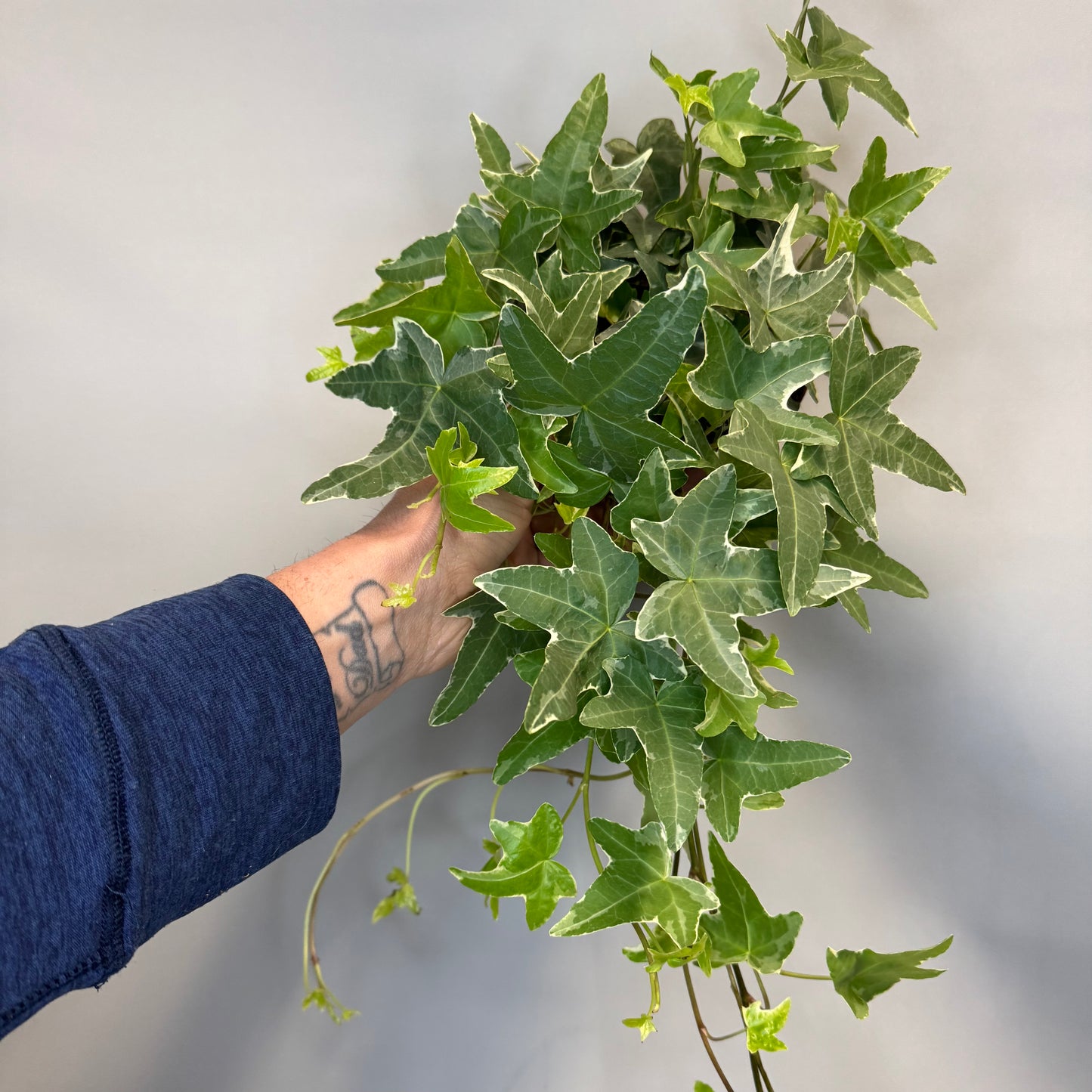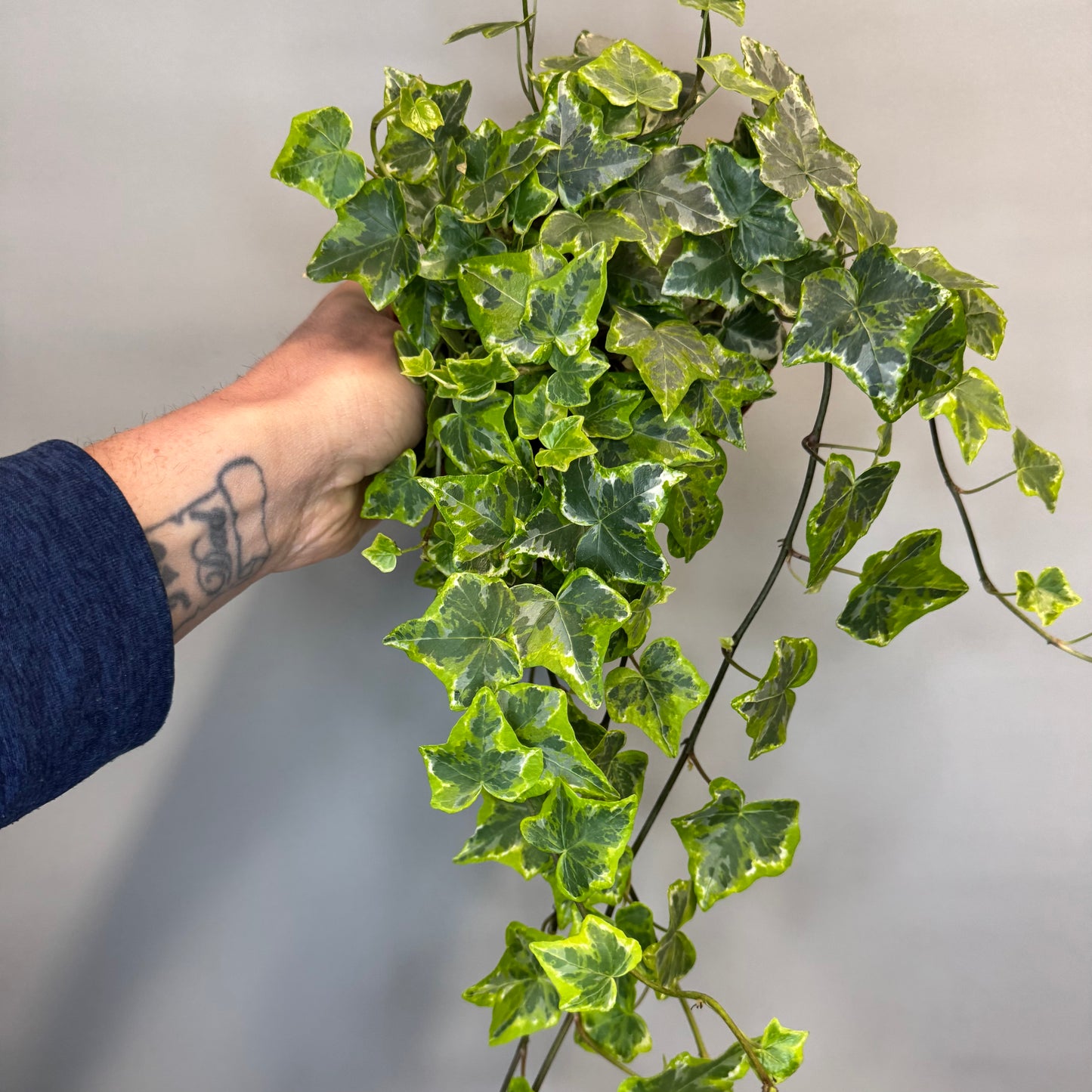Yorkshire Exotic Plants
Hedera Helix - Ivy - Mixed
Hedera Helix - Ivy - Mixed
Couldn't load pickup availability
🌿 Hedera Helix - Ivy 🌿
- Pot Size 12cm
Common Names: English Ivy, Common Ivy, European Ivy
Growth Habit: Climbing and trailing vine, can reach up to 80 feet outdoors
Pet Freindly: No
☀️ Light Requirements
-
Indoors: Thrives in bright, indirect light. Variegated varieties may require more light to maintain their coloration.
-
Outdoors: Prefers partial to full shade. Can tolerate full sun in cooler climates but may suffer leaf scorch in hot, direct sunlight.
💧 Watering
-
Indoors: Water when the top inch of soil feels dry. Avoid overwatering, as English Ivy prefers slightly dry conditions over soggy soil.
-
Outdoors: Once established, it is drought-tolerant. Water during prolonged dry periods, especially in the first growing season.
🌡️ Temperature & Humidity
-
Temperature: Ideal indoor temperatures range between 10°C to 21°C (50°F to 70°F).
-
Humidity: Prefers moderate humidity. In dry indoor environments, increase humidity by misting the leaves or placing a humidity tray nearby.
🪴 Soil & Repotting
-
Soil: Well-draining potting mix is essential. A mix containing peat moss, perlite, and vermiculite works well.
-
Repotting: Repot every 1-2 years or when the plant becomes root-bound. Choose a pot one size larger with adequate drainage holes.
🌱 Fertilization
-
Frequency: Feed monthly during the growing season (spring and summer) with a balanced, water-soluble fertilizer diluted to half strength.
-
Dormant Season: Reduce or cease fertilization during fall and winter months.
✂️ Pruning & Propagation
-
Pruning: Regular pruning helps maintain the desired shape and prevents legginess. Trim back overgrown stems to encourage bushier growth.
-
Propagation: Easily propagated through stem cuttings. Place cuttings in water or moist soil until roots develop.
🐛 Common Pests & Problems
-
Pests: Watch for spider mites, aphids, mealybugs, and scale insects. Treat infestations with insecticidal soap or neem oil.
-
Diseases: Susceptible to root rot if overwatered. Ensure proper drainage and avoid waterlogged soil.
-
Leaf Issues:
-
Yellowing Leaves: May indicate overwatering or poor drainage.
-
Brown Leaf Tips: Often a sign of low humidity, Underwatering or excessive fertilizer.
-
Leaf Drop: Can result from sudden temperature changes or drafts.
-





